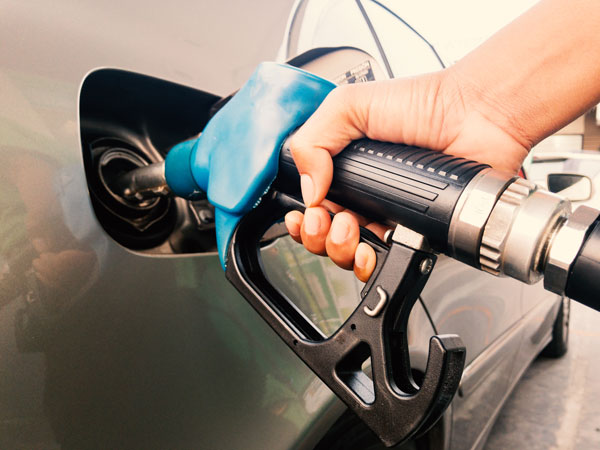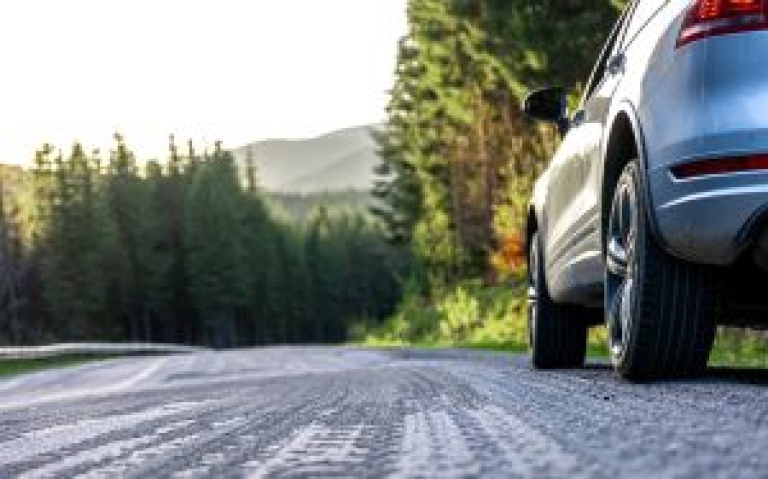Driving tips for conserving gas
July 8, 2020

Being conscious of your driving habits and adjusting them to reduce your fuel consumption will save you money and reduce your impact on the environment. You can start using these simple tips the next time you drive.
Improve your driving habits
Simple adjustments to how you drive can make a noticeable difference in your energy efficiency.
Maintain your speed
Speeding up and slowing down often wastes gas and money. According to Natural Resources Canada, changing your speed between 75 km/hr and 80 km/hr every 18 seconds can increase your fuel consumption by 20%.
Cruise control helps keep your speed steady on the highway. If traffic permits, you can also let your speed decrease when going uphill and use the momentum of going downhill to regain your speed.
Decelerate by coasting
Using your brakes wastes your momentum and you are better off taking your foot off the accelerator and coasting to slow down instead. Watch the traffic ahead of you to anticipate when you will need to slow down.
Slow down
Most vehicles have the best fuel efficiency between 50 and 80 km/hr. Past this range, the faster you drive, the more fuel you use. Natural Resources Canada points out that driving at 120 km/hr uses about 20 per cent more gas than driving at 100 km/hr and would only save two minutes on a 25 km trip.
Pay attention
Watch the traffic around you and anticipate what other drivers and pedestrians will do next. Keep a comfortable following distance between you and the car ahead and keep your speed steady. Anticipating traffic also makes you a safer driver.
Accelerate slowly
Accelerating gently saves gas. According to Natural Resources Canada, it should take you five seconds to accelerate to 20 km/hr after a red light.
More tips for conserving gas
Do not idle the car
If your vehicle is stopped for more than a minute, turn it off. According to Natural Resources Canada, an average 3-litre engine will waste more than a cup of gas for every 10 minutes of idling.
Remove unnecessary items from your car
The less your car weighs, the less gas it will use. Make sure to remove any items that you are not using from your car. Clean out the back seats and trunk and remove any sports equipment, tools, sand, salt, and anything else left over from winter that you will not need in the summer months.
Check your tire pressure
Underinflated tires decrease your fuel efficiency and the life of your tires. The correct tire pressure will be in your owner’s manual or on the edge of the driver’s door. Measuring the pressure of your tires with an air pressure gauge is easy and you can top up your tires at most gas stations.
Take off your bike rack or roof rack
Remove racks from your car when you are not using them because they cause aerodynamic drag and increase your fuel consumption significantly. Take them off your car if they will not be needed anytime soon.
Combine short trips
Your engine is more efficient when it is warm so do your errands back to back. Plan the best route to reach all your stops without backtracking.
Be conscious of your fuel use
Track how often you fill your gas tank and challenge yourself to fill it less often.
Use your fuel consumption display
Many new vehicles have a fuel consumption display and you can use it to track the effectiveness of your new driving habits.
Know when to use your air conditioning
At highway speeds, newer cars are more fuel-efficient when you use the A/C instead of rolling the windows down. For city driving, roll your windows down instead of turning on the A/C to increase fuel efficiency.
Other News

Real Insurance Stories from Real People - Langley, B.C., customer Brenda S. explains her claims experience for home insurance with Western Coast
Western Coast Insurance Services Testimonial We’re here to help you through the clai…

You Can Shop Around for Optional Car Insurance in B.C.
Yes, you can buy optional car insurance from private insurers in British Columbia. For basic…
Western Coast Insurance Services Ltd. is a wholly owned division of Western Financial Group Ltd. Insurance products are underwritten by certain licensed insurance companies and are only available throughout British Columbia, Canada.
2025 Western Coast Insurance Services Ltd. All rights reserved.


